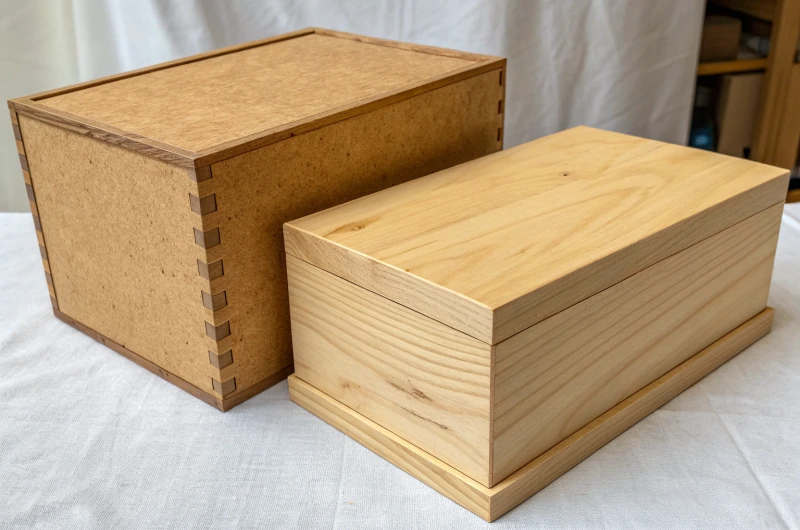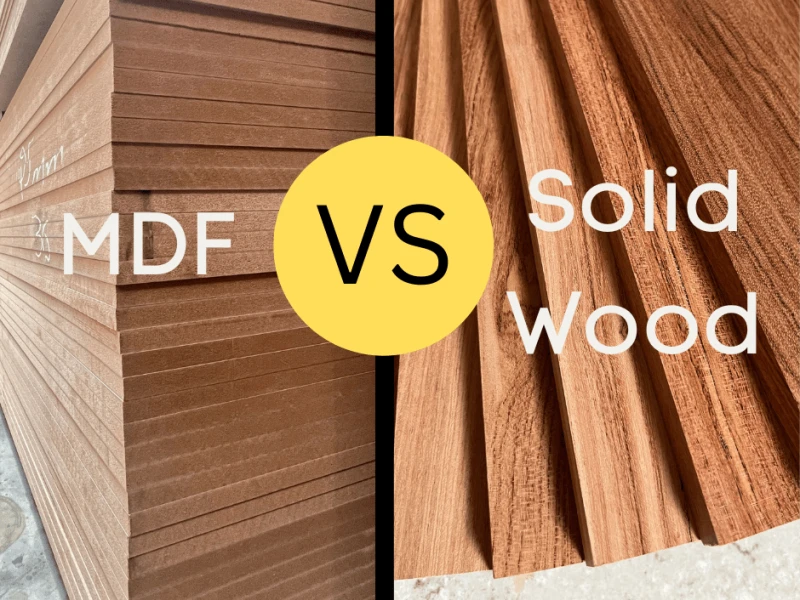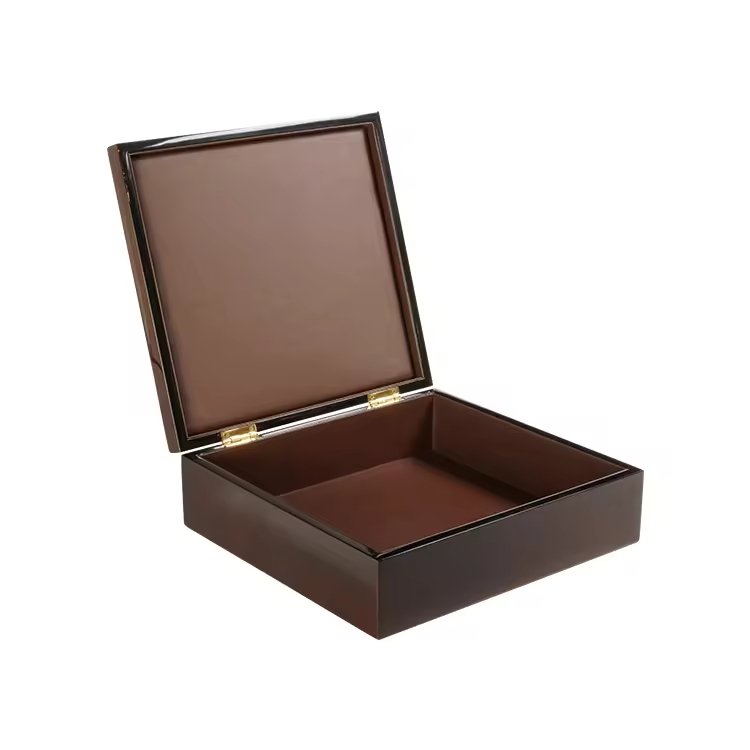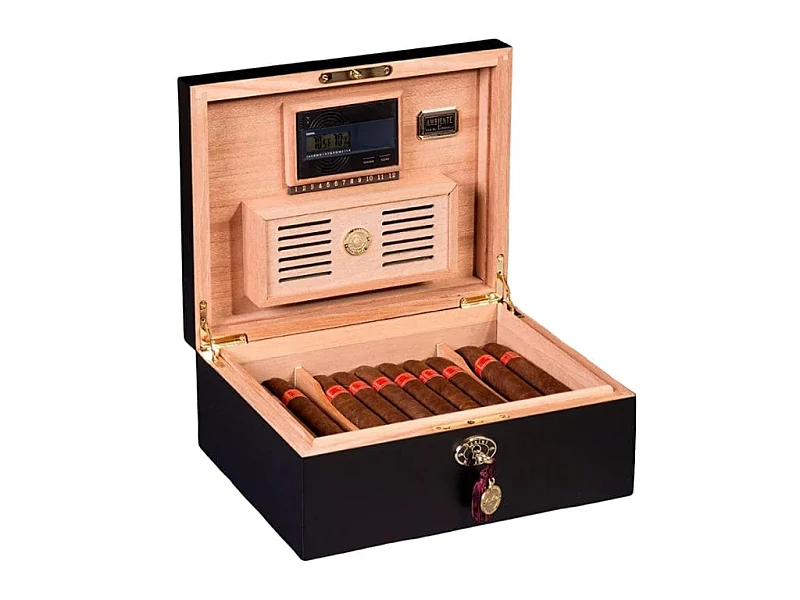
Cigar collectors worry that mixing different woods can ruin their boxes. Oils, resins, and densities may fight each other, causing costly failures.
Combining African mahogany with Spanish cedar can create challenges if oils or resins migrate, but with proper treatment and finishing, these woods can be paired successfully without major risks.
I will explain how these woods behave, what risks exist, and how premium makers solve them.
What natural oils and resins are present in African mahogany and Spanish cedar, and how do they behave over time?
Cigar box makers fear hidden oils that bleed out. These oils may stain, leave smells, or block finishes.
African mahogany contains light oils, while Spanish cedar carries strong aromatic resins. Over time, mahogany oils tend to dry, but cedar resins continue releasing fragrance.

African mahogany is known for its reddish-brown color and subtle interlocking grain. It contains natural oils, but compared to teak or rosewood, the oil level is moderate. With age, the surface becomes stable. That is why mahogany has been used in fine furniture for centuries. Spanish cedar, on the other hand, is not a true cedar but part of the mahogany family (Meliaceae). It is rich in aromatic resins. These resins repel insects, protect cigars from mold, and give the famous scent inside humidors. But resins do not stay fixed. With heat and humidity, they can migrate to the surface.
When combining these woods, the different chemical behaviors matter. Mahogany’s oils tend to polymerize, meaning they harden slowly. Cedar’s resins, however, can remain sticky or vaporize. This difference can lead to uneven surface finishes, slight odor mixing, or resin staining if left untreated. Over many years, the cedar will keep emitting fragrance, while mahogany’s oils will be less active. That is why manufacturers must account for time-based changes in both species.
Could the interaction of mahogany’s oils with cedar’s aromatic resins cause staining, odor shifts, or surface issues?
Designers worry that two woods may “fight” each other, making the box unstable or unsightly.
Yes, interactions can happen, but the issues are usually minor and controllable. The main risks are resin bleed, uneven odor profiles, and finish adhesion problems.
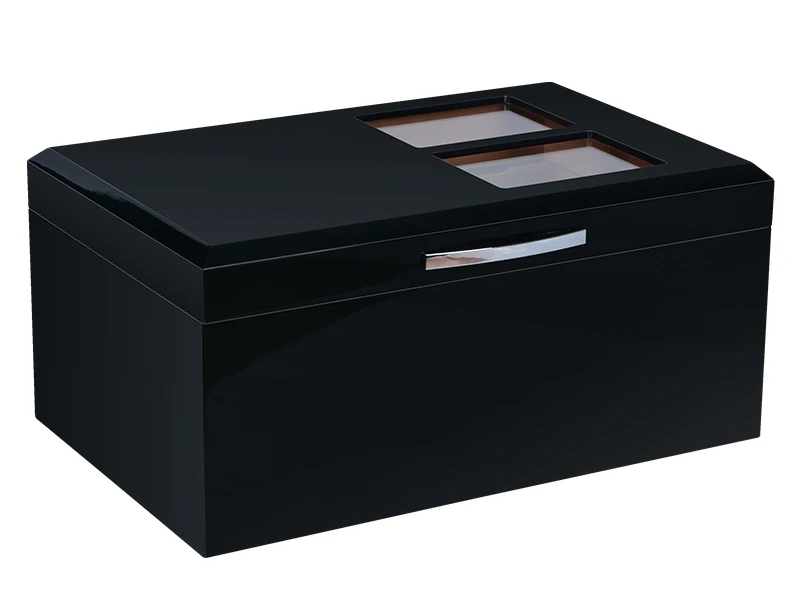
When mahogany and cedar are glued together, the main interface is the joint. If cedar’s resins migrate into mahogany, a faint staining may appear along the grain. This is more likely under humid storage. Surface finishing can also suffer. Oils in mahogany sometimes prevent lacquer from bonding well, while cedar resins can push through coatings, leaving small blisters. I have seen cases where a high-gloss piano finish looked perfect at first, but after one year, faint patches appeared because of resin movement.
Odor is another concern. Cedar is valued for its aroma, which protects and flavors cigars. Mahogany has a much lighter smell. When combined, the cedar aroma dominates, but sometimes buyers notice a softer, “muted” cedar scent because the mahogany absorbs some oils. This is not harmful, but it changes the brand experience.
From a technical view, most of these problems come down to how the woods are prepared. Kiln-dried stock, surface sealing, and proper finishing reduce risk. Without treatment, especially in cheaper humidors, resin bleed and staining are more visible.
How might different wood densities and moisture exchange rates affect long-term stability in a cigar box?
Woodworkers often overlook density differences. But over years, these differences drive warping and cracking.
Mahogany is denser and more stable than cedar, which is softer and more porous. Different moisture exchange rates can cause joints to move unevenly.
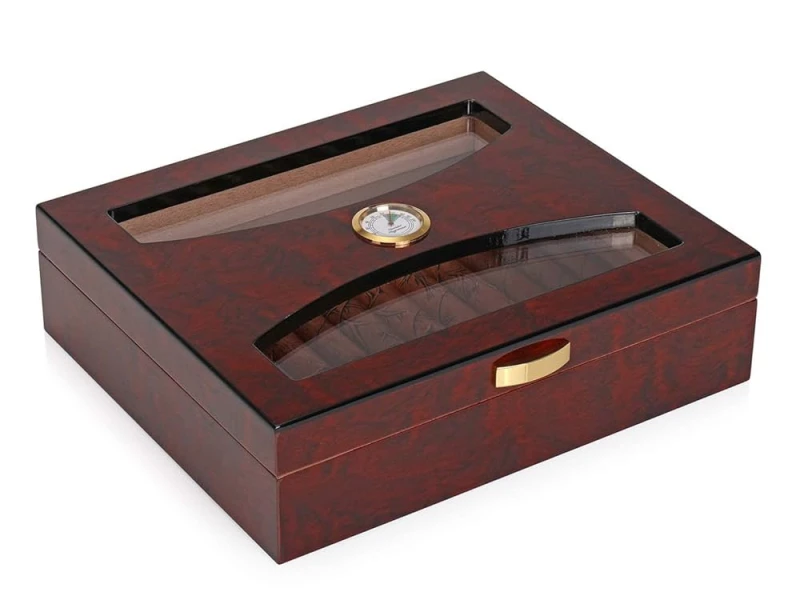
Mahogany averages 550–650 kg/m³ density, while Spanish cedar sits around 450 kg/m³. That means cedar is lighter and absorbs humidity faster. In a cigar box or humidor, this is important because the interior is designed to regulate humidity at 65–72%. Spanish cedar quickly adjusts, releasing and absorbing moisture. Mahogany adjusts slower, which creates tension at the joints.
When a humidor experiences seasonal shifts, the cedar might expand more quickly than the mahogany. Over time, this can show as hairline cracks at the seams or slightly warped lids. High-gloss finishes make these flaws more visible. In fact, I once supplied a batch of boxes where the lid panel was cedar and the frame was mahogany. After a summer in Miami, several lids no longer sat flat. The fix was to use balanced construction, like plywood cores or engineered panels, to reduce movement.
This is why high-end cigar box makers usually limit the role of mahogany to external framing or decorative veneers. They let cedar dominate the interior where humidity control is essential. By respecting the natural density difference, they reduce long-term stress inside the box.
What treatments (sealing, barrier layers, selective finishing) can minimize oil migration between woods?
Makers ask: can finishing protect the woods from each other? Yes, treatments can make a huge difference.
Sealing and barrier layers help block oils and resins from migrating. Selective finishing lets cedar “breathe” while protecting mahogany surfaces.

There are several ways to minimize migration:
1. Surface Sealing
Applying a sanding sealer to mahogany before finishing prevents its oils from bleeding into coatings. For cedar, clear shellac is often used on areas not meant to contact cigars. This keeps resins from seeping.
2. Barrier Linings
Many manufacturers insert a thin Spanish cedar veneer lining inside the box. This separates the cigar space from direct mahogany contact. The mahogany then only serves decorative or structural roles.
3. Selective Finishing
Cedar interiors are often left unfinished to allow aroma release. Mahogany exteriors are finished with lacquer or piano gloss. Keeping cedar raw while sealing mahogany reduces cross-migration.
| Treatment Method | Effect on Oils/Resins | Effect on Aroma | Effect on Appearance |
|---|---|---|---|
| Sealing (lacquer) | Blocks oil bleed | Neutral | High gloss possible |
| Shellac on cedar | Controls resin bleed | Slight aroma cut | Natural warm tone |
| Veneer lining | Full barrier | Aroma preserved | Hidden layer |
From my own production experience, using a cedar veneer lining is the most reliable. It allows cedar to perform its natural role while letting mahogany remain decorative. For export humidors, this method has kept complaints almost zero.
Are there known cases where mixed-wood interiors altered the flavor or preservation quality of cigars?
Buyers sometimes claim that mixed woods affect cigar taste. This raises real concern for premium makers.
Yes, cases exist where oils or resins from mixed woods changed cigar aroma slightly, but strong cedar interiors usually dominate and protect cigars.
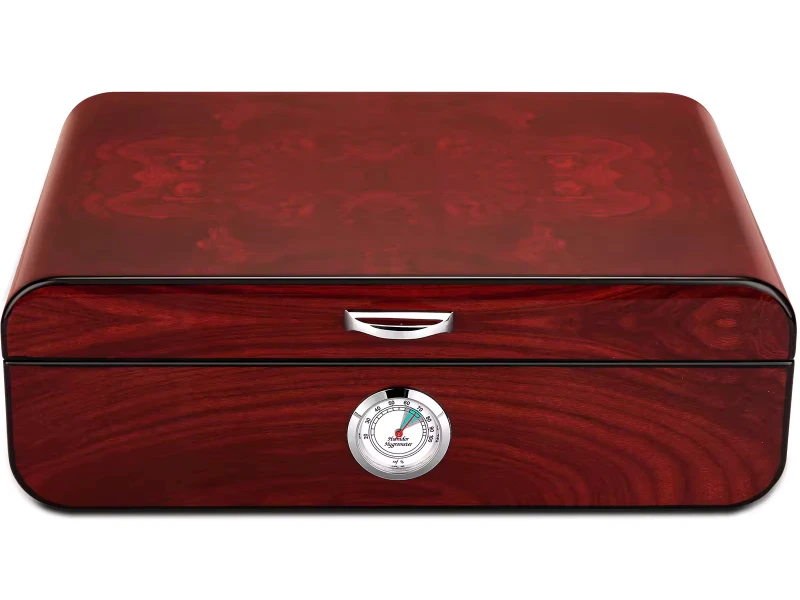
In humidors, cigars absorb ambient aromas. Spanish cedar is prized because its fragrance enhances cigars while deterring tobacco beetles. If cedar is mixed with another wood, the aroma balance can shift. Mahogany by itself is mild, but if oils migrate, they may give a faint “woody” or “earthy” note. Some cigar collectors even reported cigars tasting “flat” when the cedar aroma was less intense.
I once received feedback from a client in Germany who noticed that his premium humidors with mahogany lids had a weaker cedar smell after six months. The cigars remained well-preserved, but the “ritual” experience was different. This did not ruin the cigars, but it showed how sensitive enthusiasts are to small changes in aroma.
Still, most flavor issues come from poor wood preparation. If the cedar is properly seasoned, and if the mahogany is sealed where needed, cigars will retain their flavor. That is why top brands rarely face such complaints, while cheaper boxes sometimes do.
Luxury brands must mix woods for beauty, but they cannot risk quality loss. So they use strict methods.
Premium manufacturers use design tricks: cedar linings, engineered cores, and staged finishing. This way, mahogany’s beauty and cedar’s function stay compatible.

At the high end, brands want both visual richness and technical reliability. Mahogany provides elegance with its deep red-brown tones and glossy finish. Spanish cedar provides function with aroma and humidity control. The challenge is to combine them without creating failures.
Top-tier workshops usually solve this by using cedar only as an inner lining or veneer, while the bulk of the structure is MDF or engineered mahogany plywood. This balances density differences. Finishing stages are also staggered. Mahogany gets multiple coats of lacquer, polished to a mirror shine. Cedar is left unfinished inside, or lightly sealed in hidden areas. This dual treatment ensures cedar can breathe while mahogany stays protected.
Some makers even test their boxes under controlled humidity cycles before shipping. This simulates years of use in a few weeks. If resin bleed or joint warping appears, they adjust their construction. This level of detail separates premium brands from cheaper ones. They know that customers pay not only for looks but also for reliable function over decades.
Conclusion
Pairing African mahogany with Spanish cedar is possible, but it requires sealing, balance, and careful design to keep the box stable and the cigars safe.
Brand Name: WoodoBox
Slogan: Custom Wooden Boxes, Crafted to Perfection
Website: www.woodobox.com
WhatsApp: +86 18359265311

